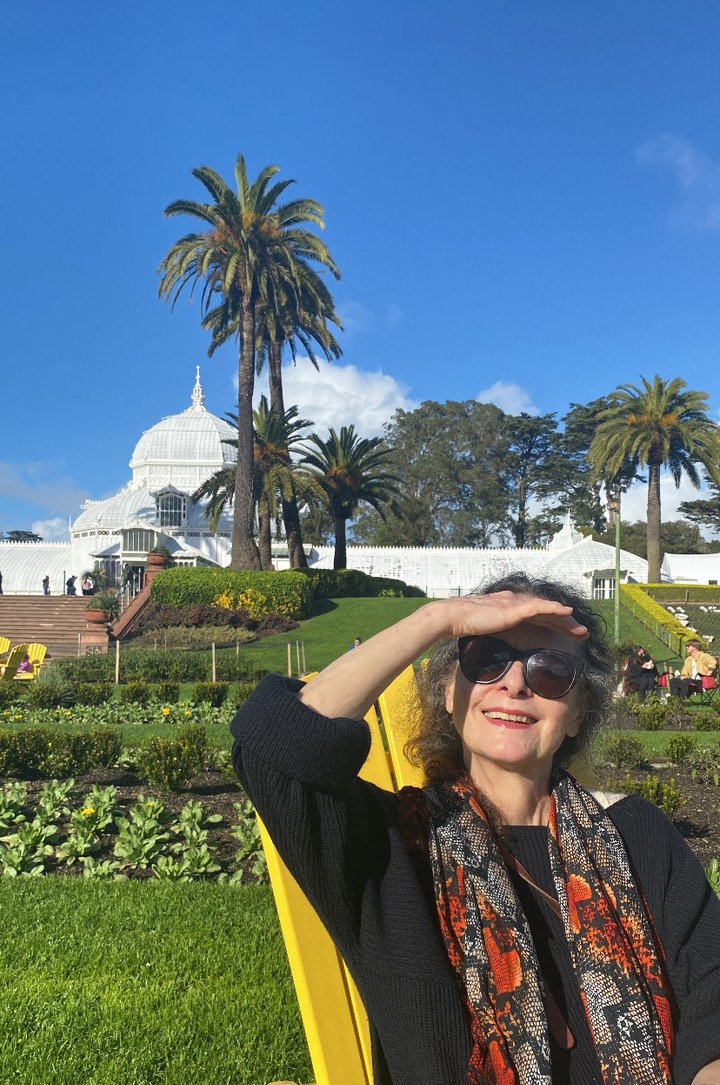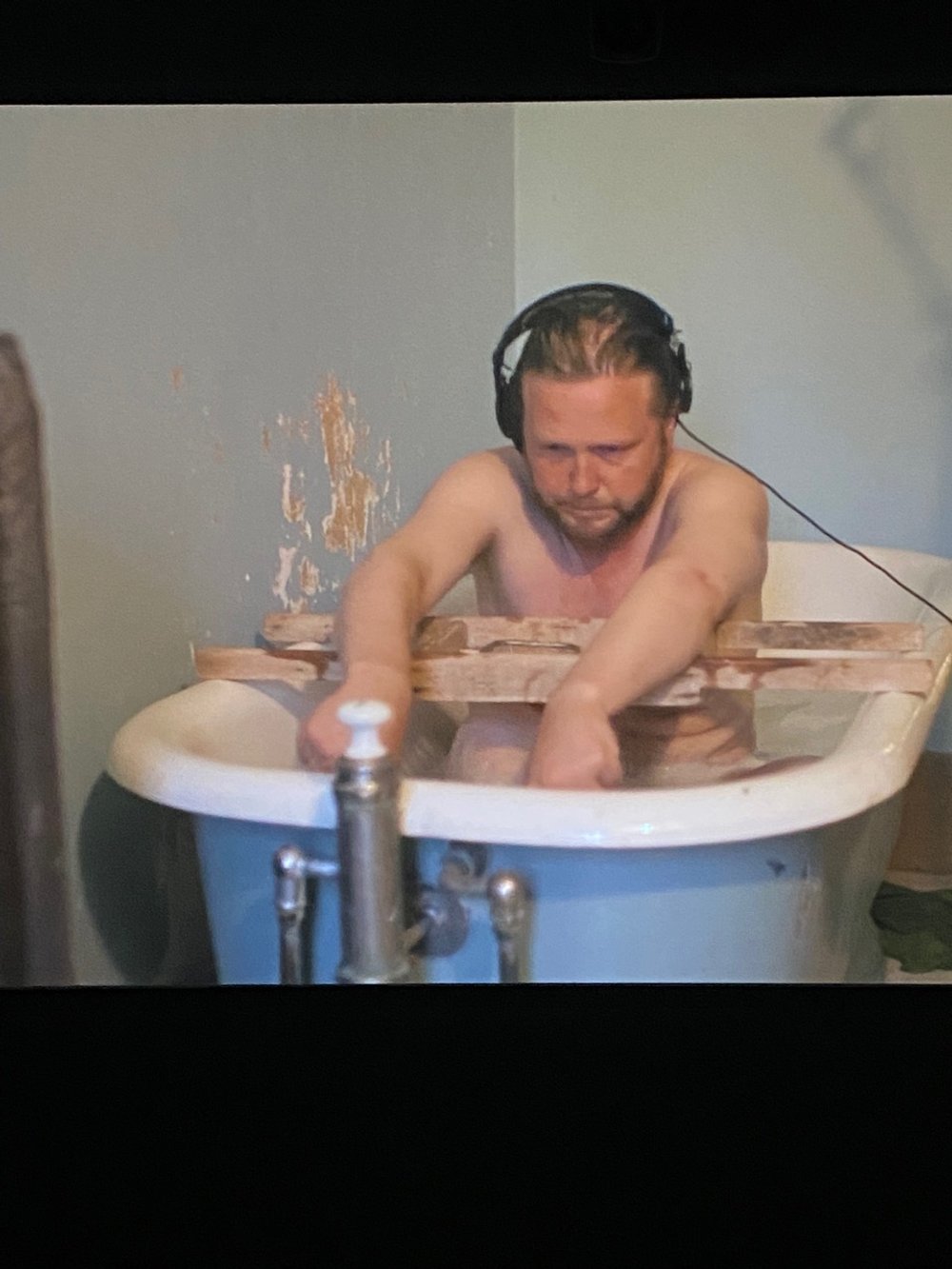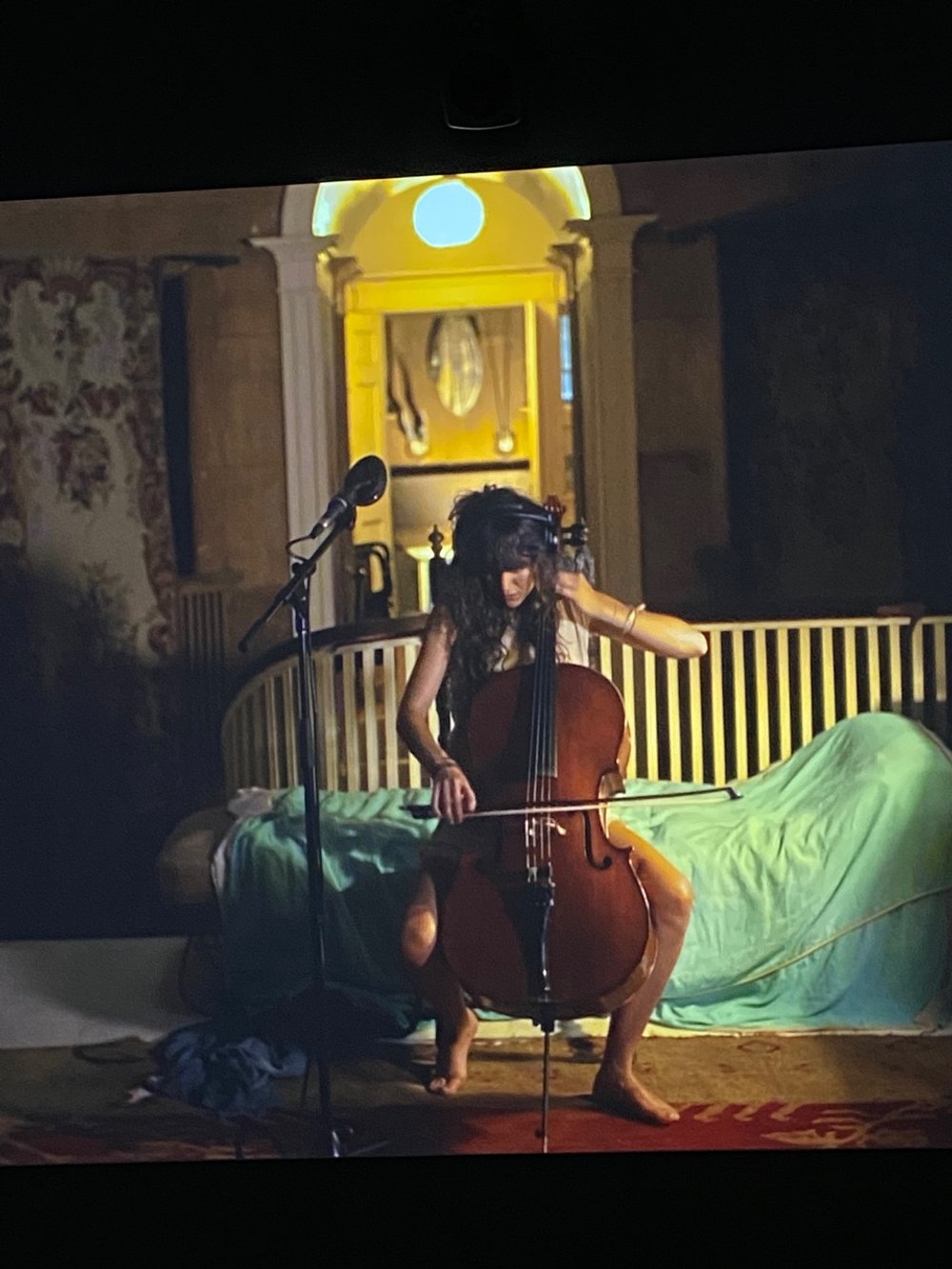Delayed Departure
Newsletter 1.14.2024
Bienvenue and welcome back to Musée Musings, your idiosyncratic guide to Paris and art. It’s been an eventful week here in Camelot, filled with museums and musings (while walking); finding new recipes, returning to old favorites. And best of all, going to those museums and eating those meals, with the people I love best - and who I miss most - when I’m in Paris. Today’s review is the first of two on Antony Gormley’s amazing exhibition at the Musée Rodin. (Fig 1) I saw it on a lovely, warm October day, the sun was shining and the sky was blue. Strolling through the garden to see the statues, both Rodin’s and Gormley’s, was a visual, intellectual and emotional feast. But even if you are in Paris now, when it must be too cold to linger outdoors for long, you will still have a full afternoon getting to know, or getting to know better, the work of one master, in the garden, at the home and in the museum of another - both sculptors who take the vessel that is our body in sometimes delightful, sometimes disconcerting, but always fascinating, directions.
Figure 1. Antony Gormley at Musée Rodin
I met up with Nicolas at SFMoMA. Having two kids in the arts means that I have two kids with unconventional schedules. Seeing Nicolas on a weekday afternoon is easier than meeting up with him on the weekend when he is likely to be teaching beginners how to blow glass or taking martial arts classes at his gym. And whether you are a fan of Meryl Streep or not, martial arts is an art. The term means the Arts of Mars, the arts of combat. (Fig 2) Mars was the Roman god of war and the term has been around since the 1550s, years before women were permitted to act on stage.
Figure 2. Venus and Mars (enjoying a post-coital slumber), Sandro Botticelli
Anyhow, Nicolas had an afternoon free, and so SFMoMA it was. It’s amazing how different a visit to a museum can be, depending upon your companion. The Kusama tickets were all gone, so we couldn’t see that. The terrace with Simone Leigh’s sculpture that I adore was closed, so we couldn’t see that either. We did see Ragnar Kjartannson’s The Visitors, (Figs 3, 4) which Nicolas saw with me in in Copenhagen. He wasn’t as patient as Ginevra had been. We didn’t stay for the entire 64 minutes, I suppose because he already knew what to expect. But he and I did wander onto another terrace, this time we were able to get close to sculptures by Robert Indiana (Fig 5), Tony Craig, (Fig 6) Tom Otterness (Fig 7) and Ellsworth Kelly. (Fig 8)
Figure 3. The Visitors, Ragnar Kjartansson, 2012
Figure 4. The Visitors, Ragnar Kjartansson, 2012
Figure 5. LOVE, Robert Indiana, SFMoMA, terrace
Figure 6. Spill, Tony Craig, SFMoMA, terrace
Figure 7. Big, Big Penny, Tom Otterness, terrace SFMoMA
Figure 8. Stele I, Ellsworth Kelly, terrace, SFMoMA
As we were walking from one space to another, in this labyrinthine museum, I happened to glance out the window and saw words flashing on an otherwise undistinguished windowless wall of a mid-rise building. The words I could see were LOVE and OVER. Nicolas, who is taller than I, could see lower and read the word RULES. (Figs 9, 10) It wasn’t static, the pattern changed, like a scrabble game or crossword puzzle. And as they changed the meaning changed, too. When I googled it later, this is what I learned. A non-profit arts organization, Sites Unseen, has a project to bring both permanent installations and temporary activations to the area’s “under-used alleys.” The aim being to “transform eight neglected alleyways in the South of Market district of San Francisco with works that provoke thought, instill community pride, and encourage social interaction.” Here is how one critic describes the three sets of over six foot high letters on this blinking neon piece that New York based artist, Hank Willis Thomas, created. “Each word gets a line; alternating ons and offs encourage different readings.
Figure 9. What I saw from a window at SFMoMA
Figure 10. LOVE OVER RULES, with all the letters illuminated, Hank Willis Thomas
Is it “love over rules” or “love overrules”?” The artist didn’t know either. They were the last words his cousin said before he was murdered over 20 years ago.
Back inside, there was a photography exhibition that we all thought was fun and weird, especially since the music from Ragnar Kjartansson’s Visitors is audible as you look at it. Candice Breitz, a German photographer sent out a call to fans in Berlin of bands/singers like The Grateful Dead, ABBA, and Britney Spears. She asked them to come to her studio wearing and/or carrying stuff about their favorite bands. (Fig 11)
Figure 11. Grateful Dead fans, Candice Breitz photograph
There were two other exhibitions that I saw with Nicolas that Ginevra and I hadn’t seen. One was about a Japanese artist, the other about Mexican artists.
The Japanese artist was Chiura Obata. The works on display are watercolors he painted during a six-week hike he took at Yosemite in 1927. (Figs 12, 13) For him, “This experience was the greatest harvest for my whole life and future in painting.” Obata taught art at U.C. Berkeley. In the 1940s, he and his family were sent to a detention camp near San Francisco, where he immediately began teaching art to the other detainees. (Fig 14) When he was transferred to another facility, a much harsher facility in the Utah desert, he again began teaching art to keep his fellow detainees’ spirits up - and his own, too.
Figure 12. Yosemite Half Dome, Chiura Obata, 1927
Figure 13. Fish, Chiura Obata, 1936
Figure 14. Mess Hall Line, Japanese Detention Center, Chiura Obata, 1942
All the while, the Chancellor of UC Berkeley kept Obata’s art safely hidden, including the watercolors from Obata’s Yosemite trip. After WWII, according to the gallery sheet, Obata returned to Berkeley where he taught until he retired in 1954. He became a US citizen that year, “his faith in California’s ‘Great Nature’ (as he called it) and the idea of America still alive.” Reading that made me cry. His resilience and his faith in America, had been cruelly tested. It’s heartbreaking to read about America’s inglorious past and contemplate the cruelty that still abounds nearly everywhere.
The other exhibition, called, ‘Sitting on Chrome’ was commissioned by SFMoMA. (Figs 15, 16, 17)It celebrates and contextualizes the visual culture of Cruising in southern California. In low-riders. Those cars that sit very low to the ground and that are very ornately decorated, both inside and out. I learned that the cars are not decorated only for pleasure but are (d)esigned to be seen, to express individual and collective identities and transform public spaces.” And that cruising is “a practice of resistance and community visibility.” The walls of the exhibition were velour and seemed to invite visitors to make their own marks. (Fig 18).
Figure 15. Sitting on Chrome, Cruising Culture, SFMoMA
Figure 16. Sitting on Chrome, Cruising Culture, SFMoMA
Figure 17. Definition of Cruising, L.A. County
Figure 18. Velour Wall covering, meant for people to participate in exhibition. SFMoMA
One final exhibition to tell you about. I noticed it as we were walking in and I promised myself I would stop and appreciate it, learn more about it, before we walked out. Called Strips of Stripes, it is a commissioned, site-specific piece, for the walls of SFMoMA’s lobby. The artist who created it is Barbara Stauffacher Solomon. (Figs 19, 20) She was born in 1928, which means that she accepted a commission just before her 95th birthday (2023). According to the gallery sheet, Solomon developed her signature “supergraphics,” style in the 1960s for the N California coastal development, Sea Ranch. Her relationship with SFMoMA began then, too. From 1962 to 1972, she designed the museum’s monthly program guides with bright letters and graphics that stretched to the edges of the page. With this exhibition, Solomon’s “supergraphics” have jumped off the page and onto the walls of the museum itself, “boldly activating (the) public space and welcoming visitors in”. The idea is to connect the two renovations of the museum - the striped motif of the museum’s 1996 Mario Botta–design (Fig 21) with the open space of the 2016 expansion by Snøhetta. (Fig 22)
Figure 19. Detail of Wall designs of SFMoMA Lobby, Barbara Stauffacher Solomon, 2023
Figure 20. Model of Wall Design for Lobby of SFMoMA, Barbara Stauffacher Solomon, 2023
Figure 21. Expansion of SFMoMA, Mario Botta, 1996
Figure 22. Expansion of SFMoMA, Snøhetta, 2016
There’s a Trader Joe’s right near the museum. I stopped by on my way home. To buy almonds to make a galette des rois. (Fig 23) As I walked by the frozen food aisle, as one does, I noticed a package of all butter puff pastry. Last year I bought a package of all butter Dufour puff pastry for $14. The all butter puff pastry at Trader Joe’s is $4.99. The Trader Joe’s pastry sheets are a little smaller, but not $10 smaller. When I got home, I got on the internet to see what was up. Trader Joe’s has been carrying all butter puff pastry for a few years now. They get it from a French supplier. But it’s only available during the holidays. People wrote in saying that they get around the seasonality of the product’s availability by buying enough packages to get through the year, as the dough’s expiration date, if kept frozen, is one year.
Figure 23. Our homemade Galette des Rois, 2024
Let’s see, what else. The weather continues to be absolutely ideal here. Temperatures in the mid-50s, sunny with clear blue sky. Always worried that it is going to be colder than it is, I find myself taking off layers as I walk - scarf, gloves, sometimes even my coat. Also, did you know that San Francisco has one hour more sun light now than Paris does? Sunset is about the same time in both cities but sunrise in San Francisco is currently 7:24 a.m., in Paris it is 8:40 a.m.
I have been making everything I have to do - from food shopping to bone density scans - into an opportunity to take a long walk. And the more I walk, the less long each of the walks becomes. One day, I walked home from the doctor’s office - it was 6 miles. I took a break at the half way point to meet Nicolas for a sandwich from Gus’s. It was a Tuesday and they double stamp your sandwich card on Tuesdays. And 8 stamps = 1 free sandwich. So, if you buy two sandwiches on two consecutive Tuesdays, on your third visit you get one free sandwich. I’m a believer!
One day Ginevra came over with a rotisserie chicken, also from Gus’s. The same day, we got a vegetable box and a salad box from Dirty Girl. (Figs 24, 25) I impressed myself by making 5 meals from one $18 organic chicken. A few meals for three of us, a few for two of us.
Figure 24. Vegetable Box from Dirty Girl
Figure 25. Lettuce Box from Dirty Girl
After the first day, of roast chicken with roasted potatoes and a salad, I got creative. One day, we had sandwiches made with the leftover barbecue sauce Ginevra had made for our barbecued pulled pork sandwiches. Served with coleslaw that Ginevra makes, riffing off a recipe by Melissa Clark and one by Gwyneth Paltrow.
My nachos, made with organic tortilla chips were a thing of beauty. Piled high with shredded chicken, refried beans, chopped jalapeño peppers, chopped onions and slices of avocado and showered with a dense layer of grated cheddar cheese. After a few minutes under the broiler, everything was warmed and melted to perfection. After a few minutes on the table with some salsa, they were only a memory.
Enchilada pie (made with leftover chicken instead of leftover turkey) was perfect another day. On layers of corn tortillas dipped in enchilada sauce, I layered organic black beans and what was left of the refried beans from the nachos. And a chiffonade of Swiss chard lightly sautéed. We dread the huge bunch of Swiss chard that is almost always in the vegetable box. In fact, Ginevra hates it so much that she often just puts it directly into the compost. But this time, I got to it before she did and surreptitiously put it into the enchilada pie. It tasted good, which is to say, we didn’t taste it at all.
I finally bowed to the unrelenting pressure of ads from Momofuko. I don’t know how those ads got onto my instagram feed but since I have very fond memories of eating at 4 of David Chang’s Momofuko restaurants when I was in New York before the pandemic, I succumbed. It was a package deal - five varieties of air dried noodles with a bottle of their soy sauce and another of their chili crisps. It’s not the noodles that are different, but the seasoning in the seasoning packets that come with it. (Fig 26) We started with the one called “Tingly, Wavy Chili Noodles.” The noodles are done in 3 minutes so no waiting around for them. We shredded the last bits of the chicken and then sautéed shredded baby savoy cabbages from Dirty Girl. And just like that, our rotisserie chicken was gone and our vegetable box was empty! And now we have a new friend. With those noodles and their spices, any leftover meat you might have in the fridge or maybe some tofu or an egg - for protein, sautéed with any vegetable begging for your attention in your crisper, you have a delicious and supremely easy-to-make meal! Gros bisous, Dr. ‘B.’
Figure 26. Momofuku Noodles and seasoning packets


























